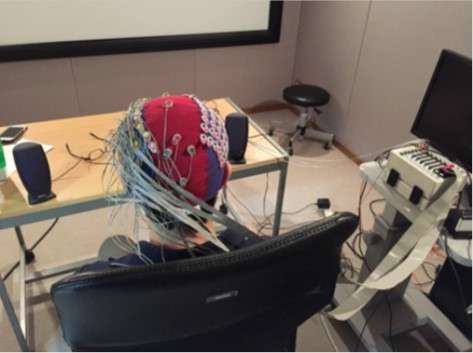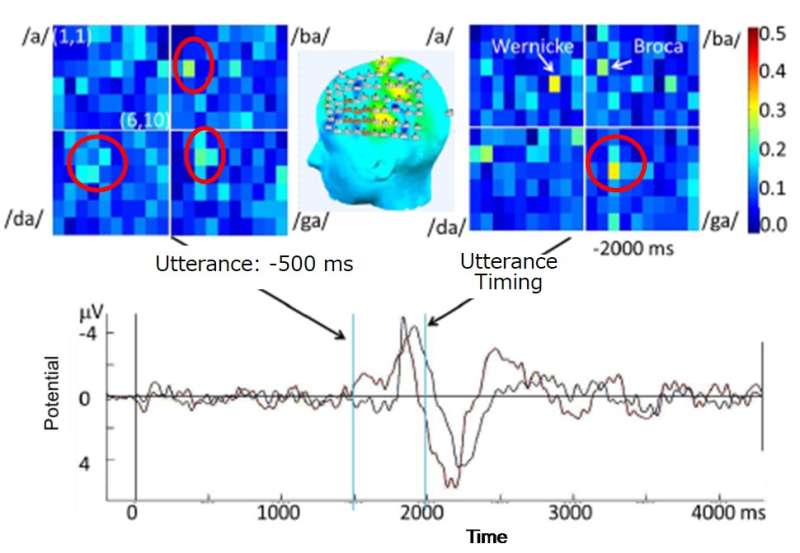Success in recognizing digits and monosyllables with high accurary from brain activity measurement

A Japanese research collaborative has developed a technology that can recognize the numbers zero to nine with 90 percent accuracy using electroencephalogram (EEG) readings while the subject utters the numbers. Furthermore, the technology can also recognize 18 types of Japanese monosyllables from EEG signals with 60 percent accuracy, demonstrating the possibility of an EEG-activated typewriter in the near future.
The details of this research will be presented at Interspeech 2017 held in Stockholm in August.
The research group collected EEG data of subjects speaking Japanese digits and monosyllables. Using this data, the group conducted digit and monosyllable recognition experiments. Up until now, speech decoding via EEG signals has been inhibited by a lack of data to allow the use of powerful algorithms based on deep learning or other types of machine learning. The research group has developed a different research framework that can achieve high performance with a small training dataset. The new framework is based on holistic pattern recognition using category theory, or composite mapping, in which a dual space and a tensor space including exterior algebra are introduced.
In the experiment of spoken-digit recognition from EEG signals, 90 percent recognition accuracy was achieved. At the same time, 61 percent accuracy in 18 Japanese monosyllable recognition was achieved, outperforming previous research efforts. Humans have sufficient intelligibility of sentences with an 80 percent monosyllable recognition rate.

Emeritus Professor Nitta and his group aim to develop a brain computer interface that recognizes unvoiced speech, or speech imagery. This technology may enable handicapped people who have lost the ability of voice communication to speak once again. It is also expected that the technology would give a healthy person the most natural interface without any limitations.
Furthermore, the research group plans to develop a device that can be easily operated with fewer electrodes and connected to smartphones within the next five years.

Provided by Toyohashi University of Technology





















